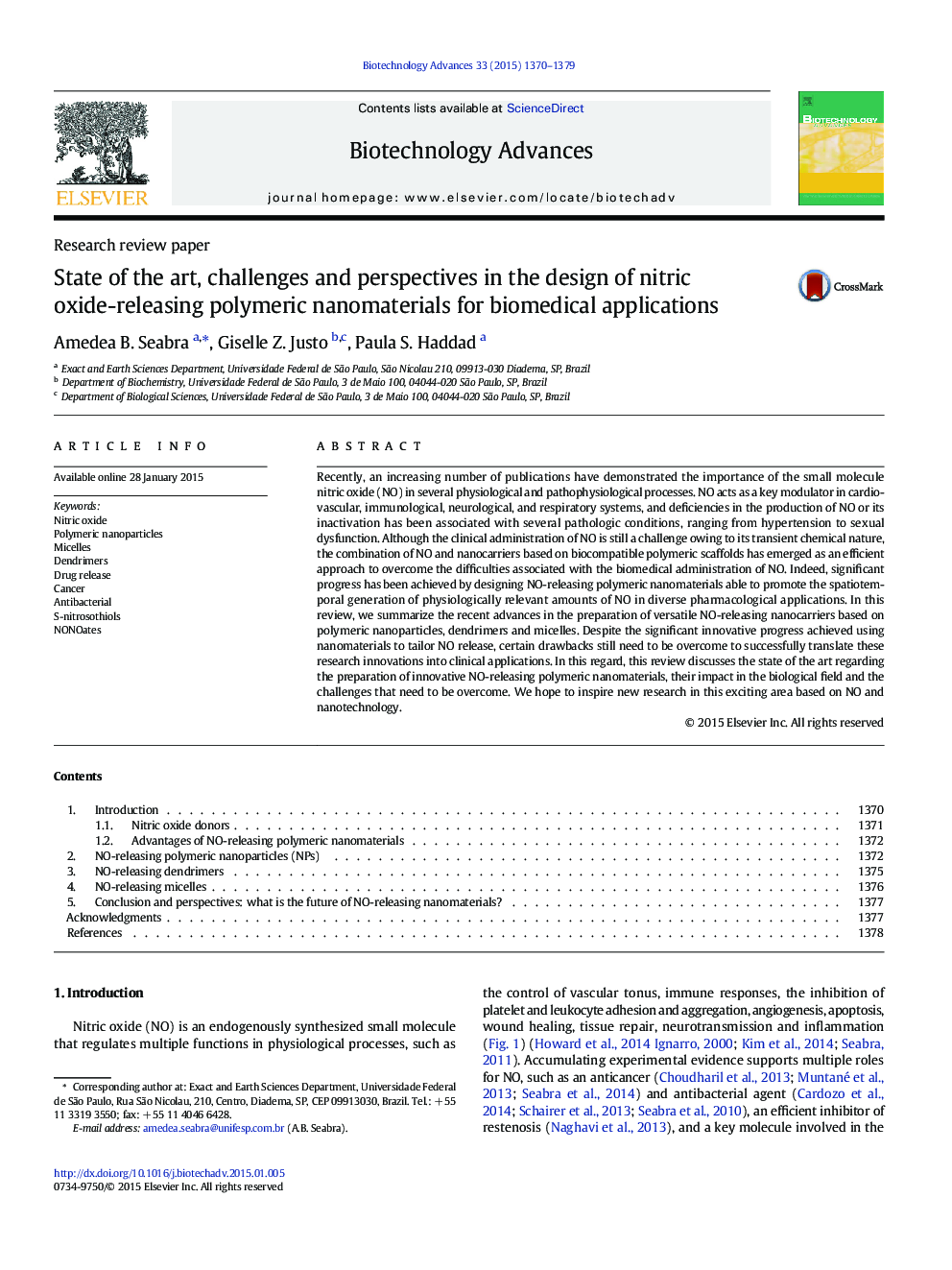| Article ID | Journal | Published Year | Pages | File Type |
|---|---|---|---|---|
| 14229 | Biotechnology Advances | 2015 | 10 Pages |
•Polymeric nanomaterials are able to mimic endogenous production of nitric oxide•Combination of nitric oxide and nanocarriers is an efficient approach for biomedical applications•The precise control of NO spatiotemporal delivery represents a challenge to the scientific community
Recently, an increasing number of publications have demonstrated the importance of the small molecule nitric oxide (NO) in several physiological and pathophysiological processes. NO acts as a key modulator in cardiovascular, immunological, neurological, and respiratory systems, and deficiencies in the production of NO or its inactivation has been associated with several pathologic conditions, ranging from hypertension to sexual dysfunction. Although the clinical administration of NO is still a challenge owing to its transient chemical nature, the combination of NO and nanocarriers based on biocompatible polymeric scaffolds has emerged as an efficient approach to overcome the difficulties associated with the biomedical administration of NO. Indeed, significant progress has been achieved by designing NO-releasing polymeric nanomaterials able to promote the spatiotemporal generation of physiologically relevant amounts of NO in diverse pharmacological applications. In this review, we summarize the recent advances in the preparation of versatile NO-releasing nanocarriers based on polymeric nanoparticles, dendrimers and micelles. Despite the significant innovative progress achieved using nanomaterials to tailor NO release, certain drawbacks still need to be overcome to successfully translate these research innovations into clinical applications. In this regard, this review discusses the state of the art regarding the preparation of innovative NO-releasing polymeric nanomaterials, their impact in the biological field and the challenges that need to be overcome. We hope to inspire new research in this exciting area based on NO and nanotechnology.
